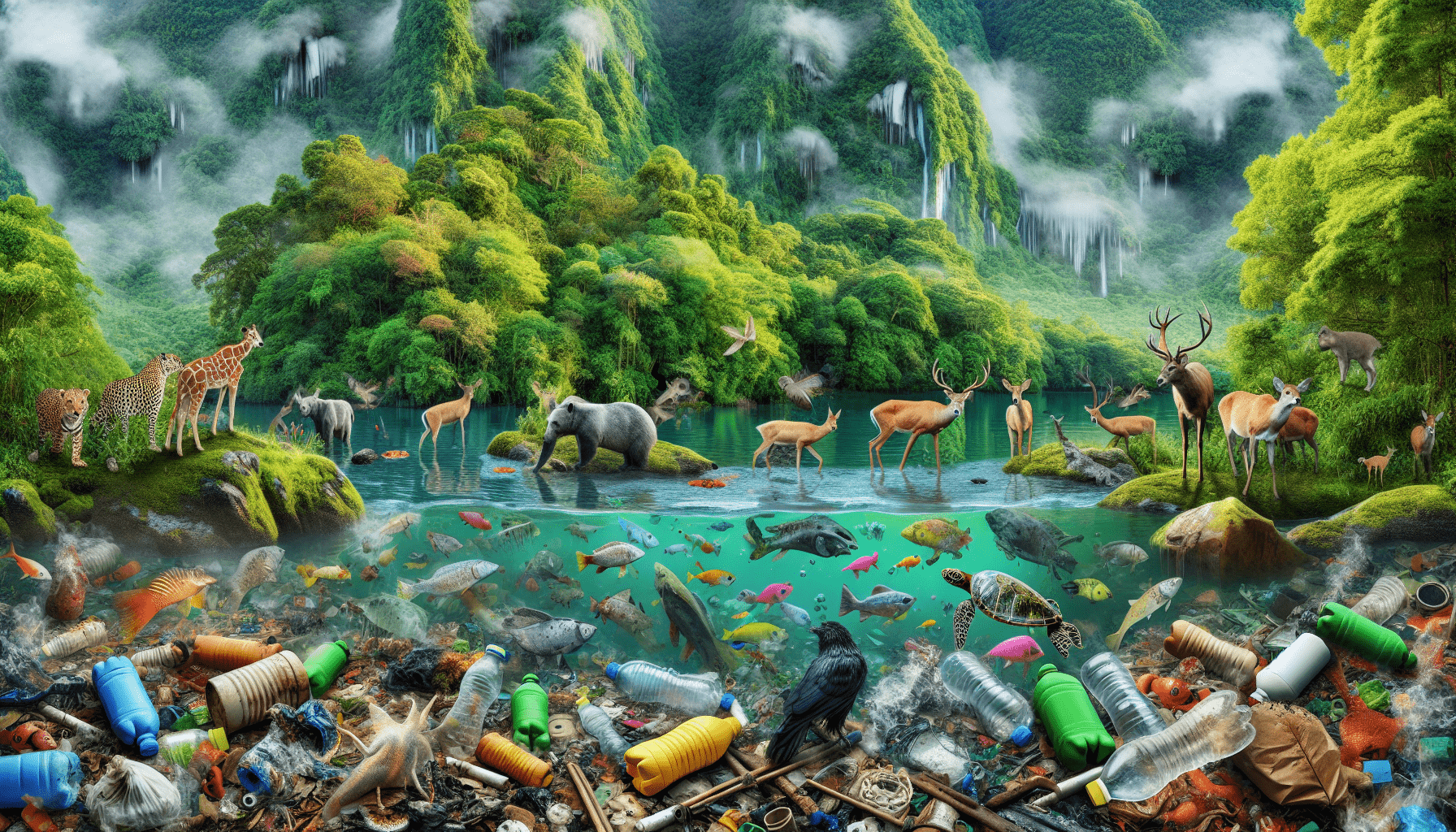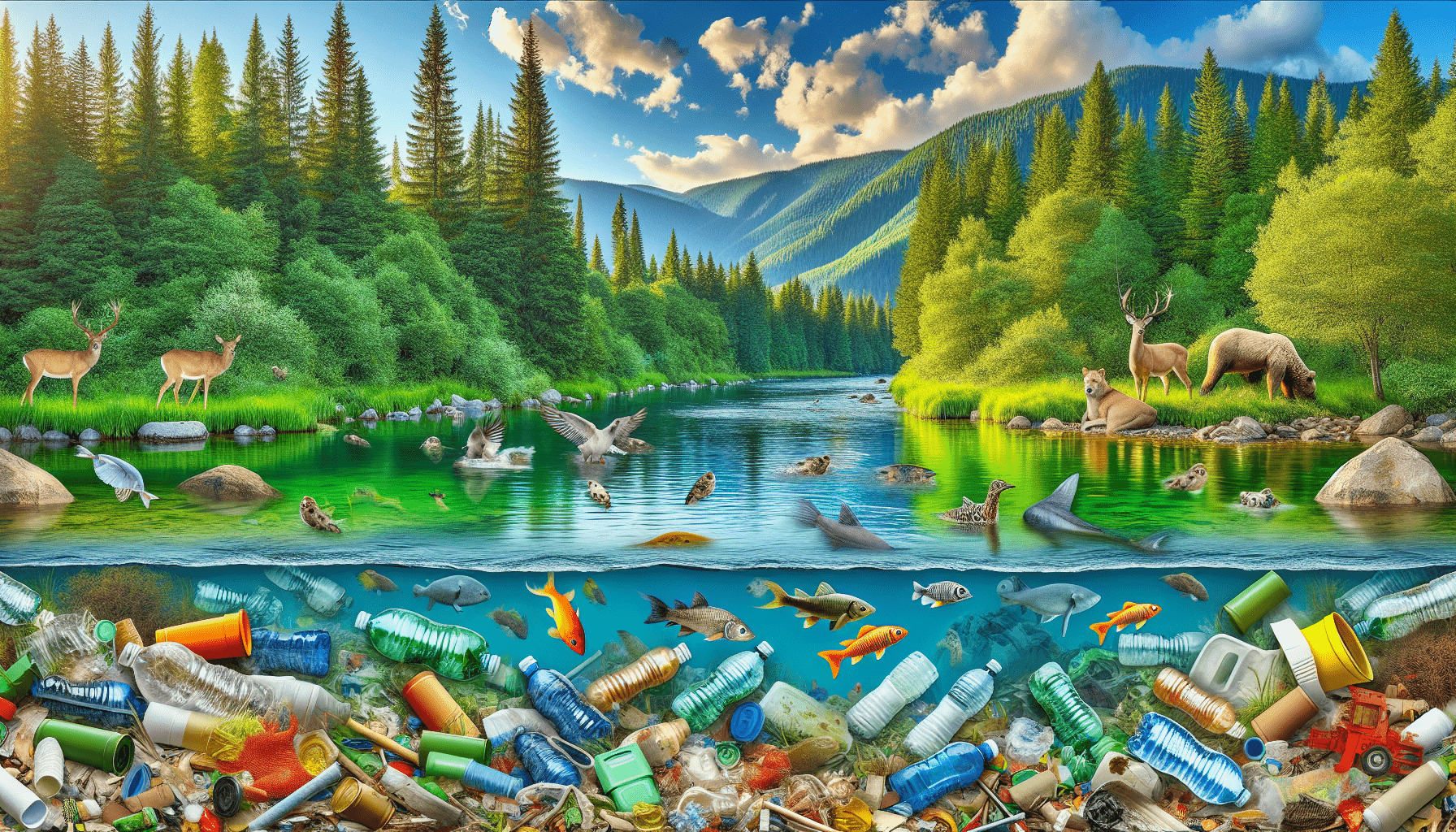Hey there! Welcome to our journey of exploring the fascinating yet concerning topic of “How Does Pollution Impact Ecosystems?” Together, we’ll dive into the ways pollution affects the delicate balance of our natural habitats, and why it’s crucial for us to understand these impacts in order to protect the world around us.
Pollution wreaks havoc on ecosystems by introducing harmful substances into the air, water, and soil. These contaminants disrupt the intricate web of life, causing harm to plants, animals, and microorganisms. For instance, water pollution from industrial waste can lead to the death of aquatic species and the degradation of coral reefs, while air pollution can cause respiratory problems in animals and affect plant growth. By examining these effects, we can better appreciate the importance of reducing pollution and safeguarding the health of our planet’s diverse ecosystems. How often have we wondered about the broader impacts of pollution on our planet? While we might see its effects on our neighborhoods and cities, pollution’s reach extends far beyond our immediate surroundings, seeping into ecosystems and altering the delicate balance of nature. Let’s embark on a journey to explore and understand how pollution impacts ecosystems and what we can do about it.
Understanding Pollution
Before we delve into its effects on ecosystems, it’s essential to grasp what pollution is in various forms.
Types of Pollution
Pollution comes in many forms, each impacting the environment in different ways.
| Type of Pollution | Sources | Examples |
|---|---|---|
| Air Pollution | Factories, vehicles | Smog, greenhouse gases |
| Water Pollution | Industrial waste, run-offs | Oil spills, chemical contaminants |
| Soil Pollution | Agricultural chemicals, waste disposal | Pesticides, heavy metals |
| Noise Pollution | Urban areas, transportation | Traffic noise, construction sounds |
| Light Pollution | Urban lighting | Over-illumination, disrupted wildlife routines |
Each type of pollution has unique characteristics and sources, but they all contribute to degrading our ecosystems.
Pollution and Ecosystems: An Intricate Connection
The natural world is composed of countless interdependent systems. When one element is thrown off balance, the ripple effects can be profound.
What are Ecosystems?
Ecosystems are communities of living organisms interacting with their physical environment. These can be vast, like rainforests, or small, like a pond. The health of an ecosystem depends on the health of its components—plants, animals, microorganisms, and non-living things like water and soil.
The Fragile Balance
Every organism in an ecosystem has a role. Predators keep prey populations in check, plants provide oxygen, and bacteria decompose organic matter. Pollution disrupts these roles, weakening the structure and function of the entire ecosystem.

Air Pollution: Suffocating Our Atmosphere
Air pollution is one of the most noticeable and pervasive forms of pollution.
Sources of Air Pollution
Our daily activities, from driving cars to industrial processes, contribute significantly to air pollution. Here’s a snapshot:
| Source | Pollutants |
|---|---|
| Transportation | Carbon monoxide, nitrogen oxides |
| Industrial emissions | Sulfur dioxide, particulate matter |
| Agricultural activities | Methane, ammonia |
| Fossil fuel combustion | Carbon dioxide, sulfur dioxide |
Impact on Wildlife
Air pollution doesn’t just affect humans. Animals, birds, and insects suffer when the air quality deteriorates. Pollutants can induce respiratory issues, reduce lifespan, and impair reproduction.
Impact on Plants
Pollutants like ozone can inhibit photosynthesis in plants, reducing their growth and weakening their defense mechanisms. This makes them more vulnerable to diseases and infestations.
Acid Rain
One severe consequence of air pollution is acid rain, which forms when sulfur dioxide and nitrogen oxides combine with water vapor. Acid rain can lower the pH of water bodies, harming aquatic life and leaching nutrients from the soil, which affects plant health.
Water Pollution: Contaminating Life’s Essential Resource
Water is vital for all forms of life, and its contamination has far-reaching effects.
Sources of Water Pollution
Water contamination can occur through various channels:
| Source | Pollutants |
|---|---|
| Industrial discharge | Heavy metals, chemicals |
| Agricultural run-off | Pesticides, fertilizers |
| Wastewater | Pathogens, pharmaceuticals |
| Oil spills | Hydrocarbons, dispersants |
Impact on Aquatic Ecosystems
Aquatic life is highly sensitive to changes in water quality. Here’s how different pollutants affect aquatic ecosystems:
| Pollutant | Impact on Aquatic Life |
|---|---|
| Nutrient run-off | Eutrophication, harmful algal blooms |
| Heavy metals | Toxicity, bioaccumulation |
| Pathogens | Disease outbreaks |
| Plastics | Ingestion, entanglement |
Eutrophication
Excessive nutrients, primarily from fertilizers, lead to eutrophication, where water bodies become nutrient-rich, causing dense plant growth and algal blooms. When these algae die, their decomposition depletes oxygen in the water, creating “dead zones” where aquatic life cannot survive.

Soil Pollution: Degradation at the Ground Level
Soil pollution is an often overlooked but critical issue, with roots that go deep.
Sources of Soil Pollution
Soil can be contaminated through:
| Source | Pollutants |
|---|---|
| Agricultural activities | Pesticides, herbicides, fertilizers |
| Industrial activities | Heavy metals, industrial waste |
| Waste disposal | Hazardous chemicals, non-biodegradable waste |
Impact on Biodiversity
Toxic substances in the soil can harm organisms from microbes to mammals. Plants absorb these toxins, which then enter the food chain, affecting herbivores and, subsequently, carnivores.
Soil Health and Agriculture
Polluted soil loses its fertility and structure, affecting crop yields and quality. This not only impacts food security but also affects economies reliant on agriculture.
Noise Pollution: An Unseen Disturbance
Noise pollution might not leave visible marks, but its impact is profound, especially on wildlife.
Sources of Noise Pollution
Common sources include:
| Source | Examples |
|---|---|
| Urban development | Construction, traffic |
| Industrial activities | Machinery, operations |
| Recreational activities | Loudspeakers, fireworks |
Impact on Wildlife
Noise pollution can disrupt animal communication, navigation, and reproduction. For instance, birds rely on calls for mating and territory defense, and excessive noise can lead to decreased population levels.
Impact on Marine Life
Marine animals, especially those relying on echolocation like whales and dolphins, are severely affected by underwater noise from ships and industrial activities.

Light Pollution: Disrupting Natural Cycles
Excessive artificial lighting interferes with natural light patterns, affecting both humans and wildlife.
Sources of Light Pollution
Key sources include:
| Source | Examples |
|---|---|
| Urban lighting | Streetlights, advertising displays |
| Industrial sites | Factory lights, flares |
| Tourist spots | Resort illumination, night events |
Impact on Wildlife
Light pollution disrupts nocturnal animal behavior. For example, many species rely on darkness for foraging and breeding. Sea turtles, guided by the moonlight to the sea, often become disoriented by artificial lights.
Impact on Plants
Artificial lighting can disrupt plant growth cycles, affecting flowering and pollination. This disturbance can have cascading effects on ecosystems relying on certain plant species.
The Interplay of Pollution Types
It’s crucial to understand that pollution types don’t exist in silos. They interact and amplify each other’s effects.
Air and Water Pollution
Pollutants in the air can settle into water bodies, adding to water pollution. Acid rain is a clear example, illustrating how air pollution directly impacts water chemistry.
Soil and Water Pollution
Contaminated soil can leach pollutants into groundwater and rivers, further spreading pollution and affecting larger ecosystems.

Human Activities: Root Causes and Solutions
Addressing pollution starts with understanding its root causes—often our own activities—and identifying solutions.
Industrial Practices
Industries are significant pollution sources, but many have started adopting greener practices like waste minimization and cleaner technologies. Supporting and advocating for these practices can make a difference.
Urban Development
Urbanization leads to increased pollution. Sustainable urban planning, incorporating green spaces and efficient waste management systems, can mitigate its impact.
Agriculture
Shifting towards sustainable farming practices, such as using organic fertilizers and integrated pest management, can reduce soil and water pollution.
Mitigating and Managing Pollution
While the damage done by pollution is significant, there’s hope through active mitigation and management strategies.
Legislative Measures
Governments have implemented various laws to control pollution. Strict regulations on emissions, waste disposal, and pollutant levels can help safeguard ecosystems.
Technological Innovations
Technology plays a vital role in addressing pollution. Advances in renewable energy, waste treatment, and pollution monitoring can significantly reduce environmental footprints.
Public Awareness and Community Action
Communities play a crucial role. By staying informed and involved in environmental conservation efforts, we can collectively address pollution.
International Cooperation
Pollution knows no borders. International agreements and collaborative efforts, such as the Paris Agreement on climate change, highlight the importance of global cooperation in tackling environmental issues.

Everyday Actions to Reduce Pollution
Our individual actions might seem small but, collectively, they can lead to meaningful change. Here are some everyday steps we can take to reduce pollution:
Reduce, Reuse, Recycle
Minimizing waste by adopting the three R’s—reduce, reuse, and recycle—can significantly cut down pollution.
Sustainable Transportation
Opting for public transport, biking, or walking reduces air pollution. Using fuel-efficient or electric vehicles also makes a difference.
Conscious Consumption
Being mindful of what we consume—choosing products with minimal packaging, supporting eco-friendly companies, and reducing plastic use—helps in the fight against pollution.
Energy Efficiency
Using energy-efficient appliances, conserving water, and turning off unnecessary lights can reduce our ecological footprint.
The Role of Education and Research
Education and research are critical in understanding and combating pollution.
Environmental Education
Raising awareness about the impacts of pollution and ways to reduce it can empower individuals and communities to take action.
Scientific Research
Continued research into the effects of pollution and the development of new technologies is vital. Programs like citizen science can help gather data and track pollution levels.
A Brighter Future: Hope and Responsibility
While the challenges are significant, we have the knowledge and tools to combat pollution. By understanding its impacts on ecosystems and taking proactive steps, we can protect our planet for future generations.
Let’s commit to being stewards of the environment, ensuring that our ecosystems remain vibrant and healthy. Every small action, every word spoken in favor of a cleaner planet, brings us closer to a world where nature thrives alongside human progress. Our journey towards a pollution-free world begins today, with us.
In summary, pollution drastically impacts ecosystems, altering the balance of nature and affecting all forms of life. However, through informed actions, technological innovations, and collective responsibility, we can mitigate these effects and pave the way for a sustainable future. Let’s embrace this challenge, knowing that the health of our planet, and all its inhabitants, depends on it.



